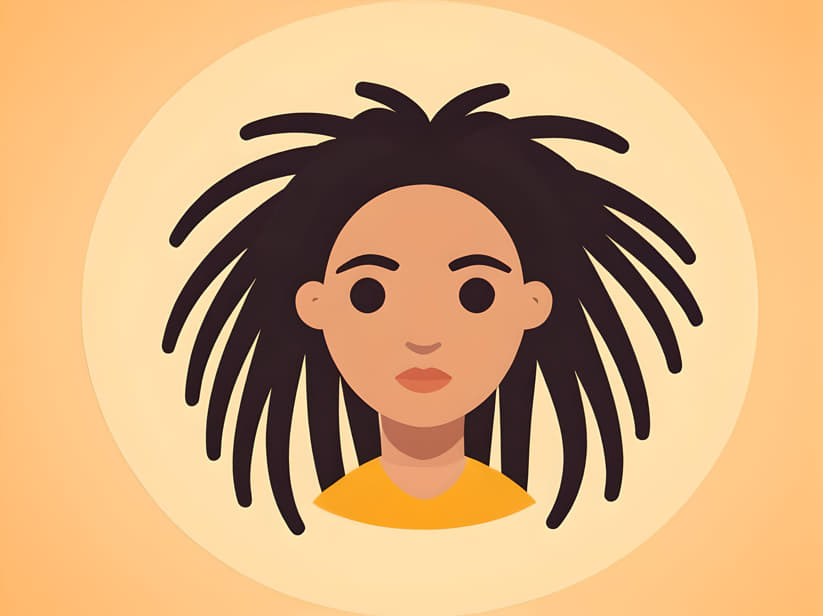
Understanding Dreadlocks and Natural Hair
Dreadlocks, often simply called “dreads,” are a hairstyle characterized by matted or knotted strands of hair that form cylindrical-shaped locks. This hairstyle has cultural, historical, and personal significance for many individuals and communities worldwide. Making dreadlocks with natural hair involves several methods, each offering unique benefits and considerations depending on hair type and desired style.
Choosing the Right Method
1. Freeform Method: The freeform method, also known as neglect or organic dreadlocks, allows hair to naturally mat and form into dreadlocks over time. This method requires minimal interference with the hair and encourages the natural locking process. To start freeform dreadlocks:
- Washing: Clean hair is essential. Use residue-free shampoos and avoid conditioners that can hinder the locking process.
- Separation: Allow hair to section and tangle naturally. Avoid combing or brushing hair excessively to encourage knotting and matting.
- Patience: Freeform dreadlocks develop gradually, typically taking several months to form distinct locks. Regular maintenance involves separating conjoined locks gently and maintaining scalp hygiene.
2. Twist and Rip Method: The twist and rip method involves manually sectioning hair and twisting sections to encourage knotting and matting. This method is suitable for those who prefer more control over the dreadlock formation process:
- Sectioning: Divide hair into desired sections using clips or hair ties. Sections should be uniform in size for even dread formation.
- Twisting: Twist each section of hair tightly from root to tip. After twisting, rip the hair gently to create loose knots and encourage matting.
- Maintenance: Regularly palm roll twisted sections to maintain shape and encourage locking. Use a crochet hook sparingly to tidy loose hairs and promote uniformity.
3. Interlocking Method: The interlocking method involves using a tool or technique to weave hair strands through themselves, creating tightly bound dreadlocks. This method is ideal for those seeking neat and uniform dreadlocks:
- Tool: Use a specialized interlocking tool or a latch hook to weave hair strands through themselves in a consistent pattern.
- Sectioning: Divide hair into small sections for precise dreadlock formation. Begin interlocking from the root and work towards the tip of each section.
- Maintenance: Regularly retighten interlocked dreadlocks to prevent unraveling. Moisturize hair with natural oils and avoid excessive manipulation to maintain hair health.
Maintenance and Care Tips
1. Washing: Cleanse dreadlocks regularly with residue-free shampoos or natural cleansers. Focus on massaging the scalp to remove buildup and maintain hair health.
2. Drying: Allow dreadlocks to air dry or use a low-heat setting on a hair dryer. Avoid excessive heat to prevent hair damage and maintain the integrity of dreadlocks.
3. Moisturizing: Apply natural oils such as coconut oil or shea butter to moisturize dreadlocks and nourish the scalp. Avoid products that contain heavy residues or synthetic ingredients.
4. Styling: Experiment with different styles and accessories to personalize dreadlocks. Use beads, wraps, or decorative clips to enhance the aesthetic appeal of dreadlocks.
5. Patience: Embrace the journey of dreadlock formation, as the process varies in duration based on hair texture, length, and chosen method. Regular maintenance and patience are key to achieving and maintaining healthy, vibrant dreadlocks.
Making dreadlocks with natural hair is a personal and transformative journey that celebrates cultural heritage, individual expression, and unique hair textures. Whether choosing the freeform, twist and rip, or interlocking method, each approach offers distinct benefits and considerations for achieving and maintaining dreadlocks. By following proper techniques, practicing regular maintenance, and embracing patience, individuals can cultivate and style dreadlocks that reflect their identity and personal style. Embrace the versatility and beauty of dreadlocks as a timeless hairstyle that continues to resonate across diverse communities and cultures worldwide.